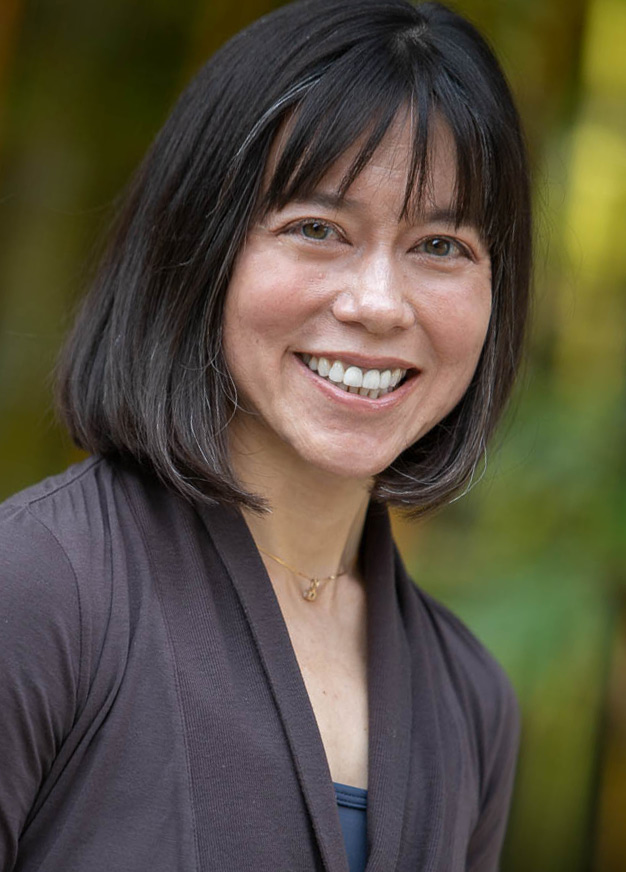Lucy Erin O’Brien
Current Position
Associate Professor Department of Molecular and Cellular Physiology Institute of Stem Cell Biology and Regenerative Medicine Stanford University School of Medicine
Investigator Chan-Zuckerberg Biohub
About Lucy
Lucy received her B.A. magna cum laude in Biochemistry from Harvard University. She obtained her Ph.D. in Biomedical Sciences from the University of California, San Francisco, studying how rudimentary epithelial organoids self-organize in culture. She performed postdoctoral research at the University of California, Berkeley, in which she switched to epithelial organs in vivo. During her postdoc, Lucy discovered how stem cells drive organ growth as an adaptation to high physiological demand. She started the O’Brien Lab in the Department of Molecular and Cellular Physiology at Stanford Medical School in 2013. Lucy was a Genentech Fellow of the Life Sciences Research Foundation and is currently a Stanford Gabilan Fellow, a Research Scholar of the American Cancer Society, and a Next Generation Leader of the International Society for Stem Cell Research.
More About Lucy
I have been passionate about nature, in all its micro and macro forms, ever since my Virginia girlhood when I first curated a basement ‘museum’ of scavenged dead rotting animals. With time, the basement biology projects grew more and more complex; I discovered science competitions and became a science fair junkie. Reading Judson’s The 8th Day of Creation left me starry-eyed with the legends and history of early molecular biology and cemented a decision to be part of that world. As an undergrad at Harvard, Ptashne’s Genetic Switch and lecture course on gene regulation inspired me with the elegance of lambda’s lysis-lysogeny decision and the experiments that led to its understanding. However, it was during my graduate training with Keith Mostov at UCSF that I found my scientific sweet spot: how individual cells create the coherent communities that define tissues, particularly epithelial tissues. I was fascinated by the ability of epithelial cells to self-organize into organoids in the right culture environment and went on to show how a dialog between intracellular signaling and the extracellular matrix creates the tubes and ascini that make up most epithelial organs.
Following the Mostov lab, I wanted to explore the question of epithelial self-organization in vivo. Here, Drosophila’s unsurpassed tools for precise genetic and cellular manipulation make it the system of choice. Soon after starting my postdoc with David Bilder at UC Berkeley, a realm of new possibilities opened up with the discovery that stem cells renew the Drosophila intestinal epithelium in a manner akin to vertebrates. With their continuous cell turnover, stem-based adult organs face many of the same organizational challenges as developing organs. But, there are also intriguing issues that are unique to mature organs—for instance, the impact of physiological function on cellular dynamics, a ‘division of labor’ between progenitors and differentiated cells, and the unpredictable environments experienced throughout an animal’s lifetime. I wondered how these factors might alter principles of epithelial self-organization.
Starting with a simple observation that guts from fed flies contained four times more intestinal cells than guts from starved flies, I showed that stem cells are linchpins of adaptive flexibility for the fly intestine. When digestive demand is high, intestinal stem cells both receive the nutrient cue and direct the growth response. Given the fly’s relative simplicity and exceptional tractability, I believe that this model of gut adaptive growth holds major potential to uncover the principles that enable lifelong plasticity of epithelial organs.
My macro investigations of nature include detailed research into the law of gravitation as applied to endothermic bipeds in motion. A favorite interest is how sliding on or through water, in crystalline or saline forms, potentiates an essential subjective variable known as the Fun Factor. The photos on this page show some of these experiments, conducted in California’s High Sierra range and on its wild Pacific coast. In the urban environment, I kickbox, cycle, practice yoga, and enjoy bad country music—not all at the same time.







